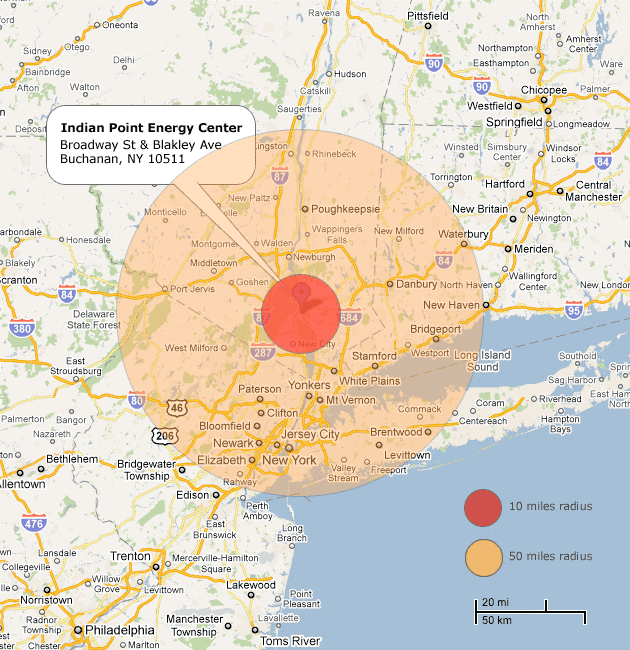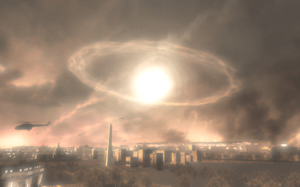
Fukushima…Chernobyl…Three Mile Island…What comes to your mind when you hear these names? Major nuclear reactor accidents. Just now I was reading an article on CNN discussing the new panic of obtaining Potassium Iodide and Lugols Iodine. What’s the difference and should you buy them?
Now with the Russian-Ukrainian war raging on, people are beginning to fear the worst. What if one of Ukrainian’s nuclear reactors are damaged? Worst yet, what if there is a nuclear attack?
I live in St Lucie County, Florida, USA, near sunny beaches and within a 10-mile radius of a major nuclear plant. Early during the Russian invasion into Ukraine, the nuclear plant’s emergency warning system was tested. Coincidence? Hardly!
What Is the Threat?
There have already been what seems to be intentional attacks on two of Ukraine’s nuclear plants, Chernobyl and Zaporizhzhia. In addition, President Putin has put his strategic nuclear forces on alert and has issued threats to show he is crazy enough to use them.
From the Chernobyl accident we learned that 90 percent of the cancers were thyroid related even 10 years after the accident and within 200 miles depending on where the wind blows.

Disclaimer: This information should be used as a guide only. It is not my intention to advise anyone on medical conditions or treatment.
What Is Potassium Iodide?
According to the CDC: “Potassium Iodide (KI) works by keeping radioactive iodine out of the thyroid gland where it can cause damage. When a person takes KI, the thyroid absorbs the non-radioactive iodine in the medicine. Because KI contains so much non-radioactive iodine, the thyroid becomes “full” and cannot absorb any more iodine—either stable or radioactive—for the next 24 hours.…KI does not keep radioactive iodine from entering the body and cannot reverse the health effects caused by radioactive iodine once the thyroid gland is damaged.”
The safest way to reduce radiation exposure is evacuating. If evacuation is not possible, Potassium Iodide is simply an alternative to reduce thyroid cancer and other thyroid illnesses related to radiation exposure. Keep in mind, Potassium Iodide is will not prevent other types of cancers associated with radiation exposure. It simply reduces the effects of radiation damage to the thyroid only.
The escalating fear of a nuclear plant accident or Russia’s threat of a nuclear war, has caused a demand for Potassium Iodide. As of this writing, popular brands such as Thyrosafe and IOTAT are out of stock.
What About Iodine?
The CDC does not approve the use of non-FBA approved iodine supplements. As an alternative, people may want to purchase Lugol’s Solution, which is a combination of pure iodine, Potassium iodide, and water.
What Is The Recommended Dosage?
Is there a recommended dosage to use Lugol’s Solution Iodine,? I’ve searched high and low, but could not find a definitive answer. Therefore, I urge you –DO YOU OWN RESEARCH and ASK YOUR PHYSICIAN.
One website, Akeso Health Science, recommends the following: “One milliliter of Lugol’s solution contains 150 mg of iodine and iodide which is slightly more than the 130 mg of KI recommended for adults. Also, pure iodine can be more toxic than iodide and if taken for too long can negatively affect thyroid function. But in a radiation emergency and no source of KI available, you may want to discuss with your physician the option of taking Lugol’s solution, if radiation levels get too high…..There is another interesting option that may serve as an alternative if KI is not available when radiation levels increase. Swabbing 8ml of 2% iodine solution on your abdomen and/or forearms.”

What If You Live Near A Nuclear Power Plant?
Nuclear power plants are designed with many safety systems to help prevent radioactive materials from being released into the environment. Their systems are tested regularly to keep the cities and people safe.
According to the US Nuclear Regulatory Commission (NRC), if you live a 10-mile radius of a nuclear plant, there are certain terminologies you need to become familiar with.
- Notification of Unusual Event (NOUE) – A situation is in progress or already completed. There is no radiation leak and no further action is necessary.
- Alert – Events are in progress or have occurred which have (or could) substantially degrade the plant safety. Any potential release of radioactive material is minimal and no further action is necessary.
- Site Area Emergency (SAE) – Events are in progress or have occurred which have caused (or likely will cause) major failures of plant functions that protect the public. This means you need to stay tuned to your television or radio and be able to hear the sirens if it becomes necessary.
- General Emergency – Events are in progress or have occurred which: a) have caused (or shortly will cause) substantial reactor core damage, with the potential for uncontrolled releases of radioactive material. Be ready to evacuate if told to do so.
If you live within a 10 mile radius of a nuclear plant, learn the community’s warning system and pay attention during the “test” dates.
In Conclusion
Nuclear power plants are built with many safety features to prevent potential accidents. However, nothing is full proof. If you live within a 10 or 50 mile radius of a nuclear power plant, take the time to become familiar with the community’s warning system, their levels of warning, and your evacuation routes.
If there is a nuclear event, local authorities should be able to provide Potassium Iodide to the residents. However, having your own supplies would be prudent. If you cannot get your hands on the Potassium Iodide, do your research on a possible alternative, Lugol’s Iodine.
But the best protection against nuclear sickness is always evacuation. Always have your emergency kits ready to evacuate in a moment’s notice.
My local nuclear plant tested their warning systems during the early days of the Russian-Ukrainian war. Do you find that a bit suspicious? Please leave your comments below.
For more information:
https://www.cdc.gov/nceh/multimedia/infographics/how_potassium_iodide_works.html
https://www.cdc.gov/nceh/radiation/emergencies/japan/ki.htm
https://www.cdc.gov/nceh/radiation/emergencies/
Related Posts:
How To Prepare For War As A Civilian
What is an EMP Attack and Can You Survive One?
We may receive commissions when you click our links and make purchases. However, this does not impact our reviews and comparisons. We try our best to keep things fair and balanced, in order to help you make the best choice for you.

